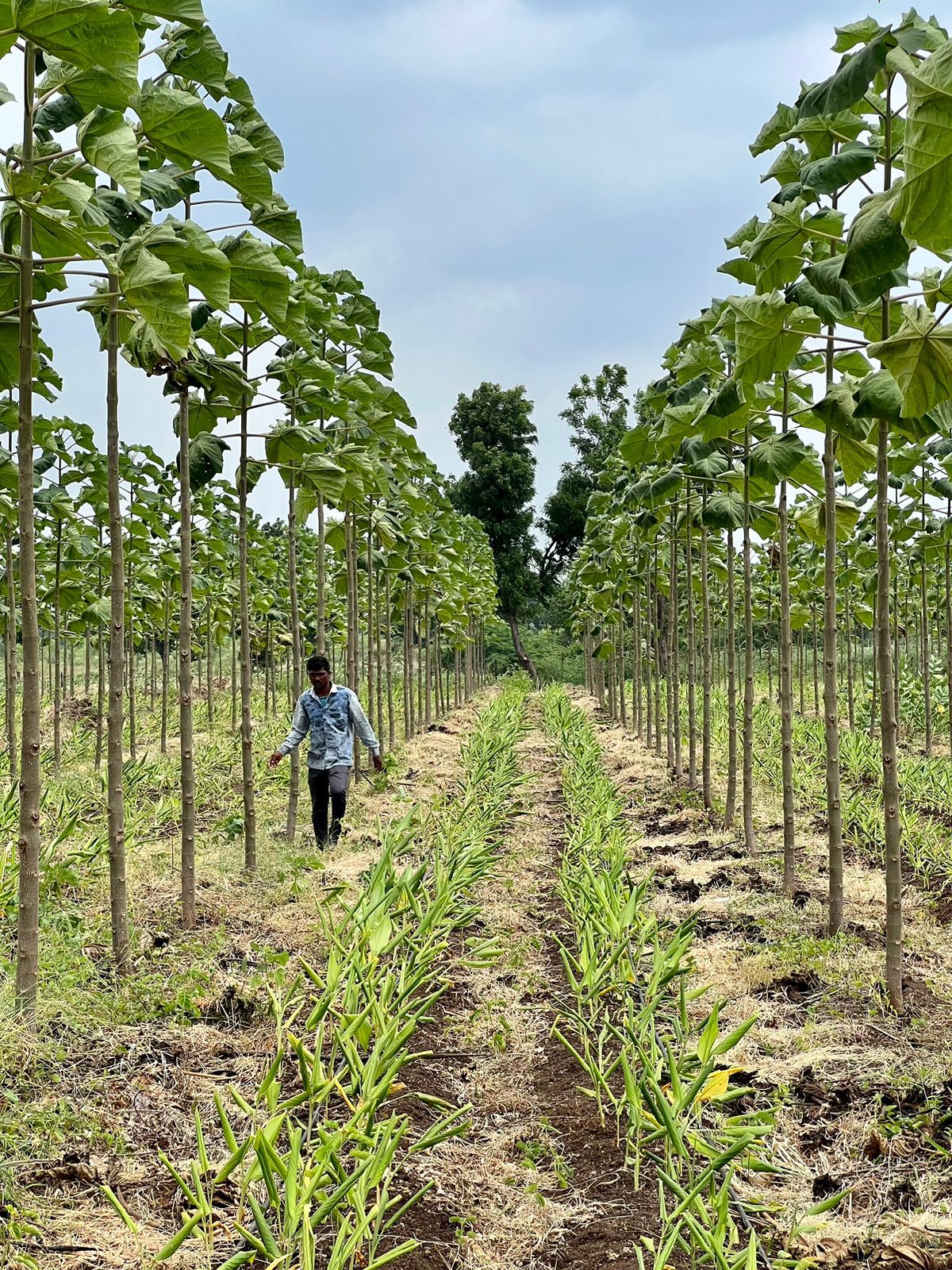
Agro-Forestry Plantations with the fastest growing tree worldwide, with 8-times higher CO2 binding
“Paulownia Phoenix-1″ is the fastest growing tree for precious hardwood on earth and absorbs 8-times more CO2 than any other tree! Ideal for commercial plantations, land reclamations & CSR Projects.

AGROFORESTRY
Agroforestry has traditionally been a way of life and livelihood in India. Now it is a modern science involving the deliberate management of trees on farms and surrounding land space. Over the span of more than two decades of systematic research in agroforestry has clearly shown that agroforestry can contribute significantly to meet the, deficits in fuel, fodder; timber, wood, accelerate economic growth; help in poverty alleviation; women empowerment and livelihood support in several ways. In order to meet challenges of climate change and natural calamities viz., tsunami, flood and drought, agroforestry with multi-tier vegetation canopy has been found to be the most viable option. Studies have indicated that the areas where vegetation is diverse as in agroforestry, suicidal incidences of farmers have not been reported. Similarly, mangrove forests acted as bio-shield in the costal areas and reduced the impact of tsunami, which calls for renewed efforts for plantation and conservation of mangrove vegetation. Diverse vegetal cover and shelterbelts of fast growing tall trees in desert have proved their efficacy in moderating microclimates, conserving natural resources and increasing productivity. Agroforestry has played significant role in rehabilitation of degraded lands, degraded mines lands,bioremediation of problem soils and reclamation of waterlogged soils through bio-drainage (use of high transpiring species such as Paulownia). Market intelligence in agroforestry system research has paved way for carbon trading.
Agroforestry linkages focusing health and nutrition, herbal production through integrating medicinal and aromatic plants, increasing export potential of organically produced food/herbs and promoting ecotourism are the new areas with great potential. Agroforestry besides meeting socio- economic and ecological requirement aims at nutritional security and employment generation.
With the upsurge in economic activities, India is consuming over a whopping 127 million tones of crude oil a year and is forced to import about 70 per cent of its needs. In the current scenario exploring energy alternatives in the form of biofuels and bioenergy assumes top priority. Biofuel based agroforestry systems will help to save foreign exchange besides ensuring environment protection, rural livelihood and energy security. Bio-energy requirement of the country can also be met to a larger extent through agroforestry based biomass production. Complex insect-pest- disease interactions under agroforestry situations can be rightly exploited for biological control of pests and diseases in Indian agriculture. Agroforestry system holds considerable potential for storage of carbon in both the soil and tree biomass. Long rotation systems that use trees for windbreaks, shelterbelts, border planting and multistoried system can sequester carbon for long periods. Carbon trading under CDM protocols has already been initiated in the country and there is a great scope in the future. Therefore, a diverse ecosystem such as agroforestry will ensure balance and safe abode for human, animal and microorganisms. Modelling of such systems will help in transformation of technology in different parts of the country. This can be achieved through active public and private partnership. The special areas of research such as biotechnology and genetic engineering will lead to improvement of multipurpose tree species for optimum production, resource conservation and biological amelioration of soil and water.
Agroforestry is the only pragmatic alternative to meet the target of increasing forest cover to 33% from the present level of 20.68%, by 2012. However, it will require appropriate research interventions, adequate investment, suitable extension strategies, harvest process technology development of new products and market infrastructure. With these inputs the area under agroforestry can be increased from the current level of 7.45 million to a sustainable level of 25.36 million ha which will help in augmentation and stabilization of production and productivity, meeting basic needs of tree based produce, minimize ecological degradation and ensure sustainable management of land, water and biodiversity. A major role for agroforestry in near future will emerge in the domain of environmental services. This will need the development of mechanism to reward the rural poor for the environmental services such as biodiversity conservation, watershed protection and carbon sequestration that they provide to society.
To know how to initiate Agroforestry Project under CSR Activity, Private Public Partnership on Highway, Muncipal Co-orporation Green Land and Development Authorities Green Land, Railway Land, Defence Land, Real Estate Project Land, Private Land, Farmer Land.
Please contact:-
Sanjeev Kr. Chaudhary
Advisor CSR & Youth Development Projects
Mob.- +91 999000 4033
Email. sanjeev@farmer.org.in
